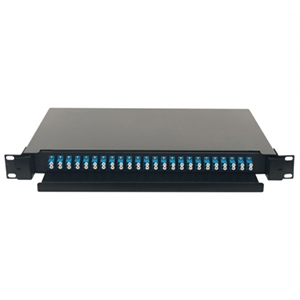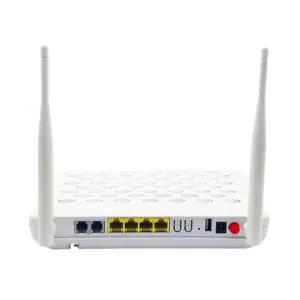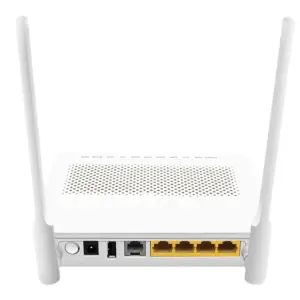Hi, welcome to read the introduction to the 40GB QSFP (Quad Small Form-factor Pluggable) optical module. In this article, I will introduce you to the basic concepts and working principles of the 40GB QSFP optical module, as well as its advantages as a solution for high-speed data transmission needs.
We will also explore the application of 40GB QSFP optical modules in data center networks and high-performance computing, as well as the high-speed transmission capabilities and versatility advantages it provides. I also cover information on technical standards, compatibility, interface types, deployment configurations, and future trends. Let’s dive into the knowledge and advantages of 40GB QSFP optical modules.
Introduction to 40GB QSFP optical module
The 40GB QSFP (Quad Small Form-factor Pluggable) optical module is a high-speed optical communication module used to achieve 40Gbps (gigabits per second) data transmission. It is a type of QSFP series optical module. It adopts a miniaturized package and can usually be inserted into the QSFP slot of network equipment.
The 40GB QSFP optical module is based on optical fiber transmission technology and uses the characteristics of light to transmit data. It usually includes an optical transmitter (Transmitter) and an optical receiver (Receiver). The optical transmitter converts electrical signals into optical signals and transmits them through optical fibers, while the optical receiver converts optical signals back into electrical signals for reception and decoding. Optical modules also include related electronic components, such as drive circuits, receiving circuits, optical fiber interfaces, etc.
40GB QSFP optical modules usually support two transmission media, multi-mode optical fiber and single-mode optical fiber, to adapt to different application scenarios and transmission distance requirements. It can also support different fiber types, such as OM3, OM4, OM5 and other fiber standards.
40G transmission requirements:
As a high-speed optical communication solution, the 40GB QSFP optical module meets the following 40G transmission requirements:
- High bandwidth requirements: With the rapid development of data centers, cloud computing and big data applications, the demand for high bandwidth continues to grow. The 40GB QSFP optical module provides a transmission rate of 4 billion bits per second, meeting the requirements for high-speed data transmission.
- High-density connection: The 40GB QSFP optical module adopts a miniaturized package, allowing high-density optical fiber connections to be achieved in a limited space. This is important for data centers and network equipment to improve connection efficiency and reduce space usage.
- Compatibility and scalability: The 40GB QSFP optical module has good compatibility and can be compatible with other QSFP optical module (such as QSFP+) slots. This means that upgrades and expansions can be performed smoothly within existing equipment and network infrastructure without significant hardware or software changes.
- High-performance applications: 40GB QSFP optical modules are widely used in high-performance computing, data center interconnection, network storage and other fields to meet the demand for fast and reliable data transmission.
In short, as a high-speed optical communication solution, the 40GB QSFP optical module has the characteristics of high bandwidth, high-density connection, compatibility and scalability, and can meet the growing demand for 40G transmission.
Application fields of 40GB QSFP optical modules
-
Data Center Network:
40GB QSFP optical modules are widely used in data center networks and are mainly used to support high-density and high-bandwidth data transmission. It can be used to connect servers, storage devices, network switches and other data center equipment to achieve fast and reliable data communication.
In data center networks, 40GB QSFP optical modules are usually used to realize connections between servers and between servers and switches. By using 40GB QSFP optical modules, data centers can achieve high-density port connections and provide a large amount of bandwidth to support high-throughput data transmission. This is very important for handling large-scale data flows, supporting virtualized environments, meeting cloud computing needs, etc.
The compatibility and scalability of the 40GB QSFP optical module also make it an ideal choice for data center network upgrades and expansions. It is compatible with existing QSFP+ optical modules, so it can be smoothly upgraded without changing the infrastructure, providing higher transmission rates and bandwidth.
-
High performance computing:
40GB QSFP optical modules also have important applications in the field of high-performance computing. High-performance computing usually involves large-scale data processing and transmission, which has very high requirements for high bandwidth and low latency, and the 40GB QSFP optical module can meet these needs.
In high-performance computing clusters, 40GB QSFP optical modules can be used to connect communication links between computing nodes, storage systems and network devices. With the high-bandwidth transmission capability provided by the 40GB QSFP optical module, rapid transmission of large-scale data can be achieved to support the needs of high-performance computing applications.
40GB QSFP optical modules can also be used to build high-performance storage systems for storing and accessing large-scale data. By using 40GB QSFP optical modules, high-speed data transmission between storage systems and computing nodes can be achieved, providing fast data access and processing capabilities.
The application of 40GB QSFP optical modules in the field of high-performance computing can meet the needs of large-scale data processing and transmission, provide high-bandwidth, low-latency communication capabilities, and support the rapid development of high-performance computing applications.
Features and advantages of 40GB QSFP optical module
-
High-speed transmission capability:
The 40GB QSFP optical module has excellent high-speed transmission capabilities and supports a transmission rate of 40Gbps (gigabits per second) per second. This high-speed transmission capability enables it to meet the data transmission requirements for large bandwidth and high throughput. Whether in data center networks, high-performance computing or other application fields, 40GB QSFP optical modules can provide fast and reliable data transmission and support high-speed data processing and communication.
-
Versatility:
The 40GB QSFP optical module has the advantage of versatility, which is mainly reflected in the following aspects:
-
Support different communication protocols: 40GB QSFP optical module can support a variety of communication protocols, such as Ethernet, Fiber Channel (Fiber Channel), InfiniBand, etc. This allows it to adapt to different application scenarios and network environments and meet the communication needs of different protocols.
-
Supports multiple fiber types: 40GB QSFP optical module can support two transmission media, multi-mode fiber and single-mode fiber, to adapt to different transmission distance requirements. It can also support different optical fiber standards, such as OM3, OM4, OM5, etc. This flexibility allows the 40GB QSFP optical module to be used in different fiber optic networks and provide appropriate transmission performance.
-
High-density connection: The 40GB QSFP optical module adopts a miniaturized package, allowing high-density fiber optic connections to be achieved in a limited space. It can provide multiple channels (usually 4) of connections, thereby achieving more port density on the device, improving connection efficiency and saving space.
-
Compatibility and scalability: The 40GB QSFP optical module has good compatibility and can be compatible with other QSFP optical module (such as QSFP+) slots. This means that upgrades and expansions can be performed smoothly within existing equipment and network infrastructure without significant hardware or software changes.
The versatility of the 40GB QSFP optical module makes it a flexible and reliable optical communication solution. It has high-speed transmission capabilities, supports multiple communication protocols and fiber types, and is suitable for different application scenarios and network needs.
-
Technical standards and specifications for 40GB QSFP optical modules
Optical module structure:
The structural characteristics of the 40GB QSFP optical module are as follows:-
Number of ports: 40GB QSFP optical modules usually have 4 channels of ports, and each channel supports a transmission rate of 10Gbps. This design provides high-density connectivity, allowing multiple fiber channels to be connected in a limited space.
-
Fiber type: 40GB QSFP optical module can support both multi-mode fiber and single-mode fiber transmission media. Multimode fiber is suitable for short-distance transmission, while single-mode fiber is suitable for long-distance transmission. The specific fiber types supported depend on the specifications of the optical module and the manufacturer’s specifications.
-
Power supply: 40GB QSFP optical modules usually require external power supply. It can obtain the required power through the optical module slot or other power interfaces. In environments such as data centers, there are usually specialized power supply equipment to provide stable power for optical modules.
-
-
Communication protocol:
The 40GB QSFP optical module supports a variety of communication protocols, including but not limited to the following:-
Ethernet: 40GB QSFP optical module can be used for Ethernet communication and supports an Ethernet transmission rate of 40Gbps. This makes it widely used in data center networks to connect servers, switches and other equipment to achieve high-speed data transmission and communication.
-
InfiniBand: 40GB QSFP optical module can be used for InfiniBand communications to meet the needs of high-performance computing and data centers. InfiniBand is a high-performance interconnect technology that provides low-latency, high-bandwidth data transmission capabilities and is suitable for large-scale data processing and parallel computing.
-
Fiber Channel: The 40GB QSFP optical module can also support the Fiber Channel protocol and is used for storage area networks (SAN) and other storage applications that require high-speed data transmission. Fiber Channel provides reliable, high-performance storage connectivity for the transmission and storage of large-capacity data.
In addition to the above communication protocols, the 40GB QSFP optical module can also support other customized protocols and application scenarios, depending on the manufacturer and specification requirements of the optical module. The exact details of technical standards and specifications can be found in relevant optical module specification documents, such as QSFP MSA (Multi-Source Agreement), etc.
-
Compatibility and interface types of 40GB QSFP optical module
-
Compatibility points:
The 40GB QSFP optical module has good compatibility, mainly in the following aspects:-
QSFP+ compatibility: 40GB QSFP optical modules are generally compatible with QSFP+ optical module slots. This means that a 40GB QSFP optical module can be plugged into a QSFP+ slot for smooth upgrades and expansion without the need to replace equipment or make significant hardware changes. This compatibility enables the 40GB QSFP optical module to be compatible with legacy QSFP+ equipment and network infrastructure.
-
QSFP28 compatibility: Although QSFP28 is an optical module specification that supports higher transmission rates (100Gbps per second), some 40GB QSFP optical modules may also be compatible with the QSFP28 slot. This means that some 40GB QSFP optical modules can be inserted into the QSFP28 slot to meet higher transmission rate requirements.
-
Fiber and connector compatibility: 40GB QSFP optical modules usually support multiple fiber types and fiber connectors, such as LC (Lucent Connector) and MPO (Multi-fiber Push-On), etc. This makes it compatible with different types of optical fibers and connectors and adaptable to different fiber optic network environments.
In general, 40GB QSFP optical modules have good compatibility and can be compatible with different types of devices and network interfaces, including QSFP+ slots and some QSFP28 slots.
-
-
Interface type:
Common interface types of 40GB QSFP optical modules include:-
QSFP+ (Quad Small Form-factor Pluggable Plus): QSFP+ is the most common interface type for 40GB QSFP optical modules. It adopts a miniaturized package form and supports 4 channels of data transmission, with a transmission rate of 10Gbps for each channel. The QSFP+ interface is widely used in fields such as data center networks and high-performance computing.
-
QSFP28 (Quad Small Form-factor Pluggable 28): QSFP28 is an interface type that supports higher transmission rates, with a transmission rate of 25Gbps per channel. Although QSFP28 is mainly used for 100Gbps transmission, some 40GB QSFP optical modules may also be compatible with the QSFP28 interface for greater flexibility and scalability.
It is worth noting that the interface type of the 40GB QSFP optical module mainly depends on the manufacturer and specification requirements of the optical module. Therefore, in practical applications, the appropriate interface type needs to be selected based on specific optical module specifications and equipment requirements.
-
Deployment and configuration of 40GB QSFP optical module
-
Optical module installation:
Install 40GB QSFP optical modules usually need to follow the following steps:-
Step 1: Ensure that the optical module slot of the target device matches the interface type of the 40GB QSFP optical module, such as QSFP+ or QSFP28.
-
Step 2: Before performing any operation, ensure that you have taken appropriate anti-static measures to avoid damage to the optical module. Use devices such as grounding wrist straps or grounding mats to prevent electrostatic discharge.
-
Step 3: Gently insert the 40GB QSFP optical module into the optical module slot of the target device. Make sure the plug is properly aligned with the slot and avoid applying excessive pressure.
-
Step 4: Once inserted, secure the optical module to the slot using an appropriate method. This usually involves tightening screws or using a snap-on mechanism to ensure a secure connection to the optical module.
-
Step 5: Check the connection status of the optical module to ensure that it is correctly installed and connected to the optical fiber interface of the device.
Please note that specific optical module installation steps may vary depending on equipment manufacturers, module specifications, and specific application scenarios. Therefore, before proceeding with installation, it is recommended to refer to the installation guides and instructions of the relevant equipment and optical modules to ensure correct installation steps and operations.
-
-
Network configuration:
Networks configured with 40GB QSFP optical modules usually involve the following aspects:-
Port configuration: First, you need to configure the port on the target device so that it recognizes and enables the 40GB QSFP optical module. This may involve a device management interface, command line interface, or other configuration tools, depending on the type of device and operating system. You need to set the relevant ports to the appropriate speed and protocol (such as 40Gbps Ethernet).
-
Transmission parameter adjustment: Once the port configuration is completed, you may need to adjust the transmission parameters according to actual needs. These parameters can include transmission rate, bandwidth allocation, bit error rate, etc. Adjusting these parameters can optimize the performance and transmission quality of the optical module to meet specific network needs.
-
Monitoring and management: 40GB QSFP optical modules usually provide monitoring and management functions to monitor their status and performance in real time. You can use the management tools or network management system provided by the device to monitor the working status, temperature, optical power and other information of the optical module, and perform necessary troubleshooting or performance optimization.
Please note that specific network configuration methods and parameter adjustments may vary depending on device type, operating system, and network environment. It is recommended to refer to the documentation and guides of the relevant devices and optical modules for detailed configuration instructions and best practice recommendations.
-
Future development of 40GB QSFP optical modules
The future development trends of 40GB QSFP optical modules in technology and applications include:
Higher transmission rates: As network demands continue to grow, 40GB QSFP optical modules may develop higher transmission rates. For example, the 100Gbps QSFP28 optical module has been widely used, and the 400Gbps QSFP-DD (Quad Small Form-factor Pluggable Double Density) optical module has also been released. These higher-speed optical modules will further meet the demand for high bandwidth in fields such as data centers and high-performance computing.
Multi-mode and single-mode: 40GB QSFP optical modules usually support multi-mode and single-mode optical fibers to adapt to different optical fiber network needs. Future development trends may include higher-capacity multi-mode optical fiber and longer-distance single-mode optical fiber to meet the requirements of different application scenarios.
Wider application fields: 40GB QSFP optical modules are widely used in data centers, cloud computing, super computing, storage networks and other fields. With the advancement of technology and changes in application requirements, 40GB QSFP optical modules may expand their applications in other fields, such as 5G communications, edge computing, Internet of Things, etc.
Higher integration and functionality: Future 40GB QSFP optical modules may achieve higher integration and richer functionality. This includes integrating photoelectric converters, digital signal processors and monitoring circuits inside the optical module to provide higher levels of performance monitoring, fault detection and fiber optic network management functions.
Summary:
Thank you for reading the introduction about 40GB QSFP optical module. As a solution to meet high-speed data transmission needs, 40GB QSFP optical modules are widely used in data center networks and high-performance computing. It provides high-speed transmission capabilities and supports a transmission rate of 40Gbps to meet the demand for high-density and high-bandwidth data transmission. At the same time, the 40GB QSFP optical module has the advantage of versatility and supports different communication protocols and application scenarios.
In the future, 40GB QSFP optical modules are expected to continue to develop in technology and applications, achieving higher transmission rates and expanding into a wider range of applications. If you have any further questions about the 40GB QSFP optical module or want to know more information, please continue to pay attention to GracyFiber Company, we will be happy to help you. Thanks!
- What is QSFP 40G?
- What is a QSFP optic?
- Can I connect QSFP to SFP?
- What type of QSFP is 40GBASE SR4?
- What is the distance of QSFP 40G?
- CAN single-mode fiber support 40G?
- Which transceiver can support 40gbps?
- What is difference between SFP and QSFP?
- What are the different types of 40G QSFP?
-
40G QSFP BIDI RX 850nm 100m Module Receiver Only
-
40G QSFP PSM 1310nm 2km Transceiver Module
-
40G QSFP+ 1310nm 40km lc Transceiver Module
-
40G QSFP+ BIDI 850nm 100m Transceiver Module
-
40G QSFP+ CSR4 MTP Optical Transceiver Module
-
40G QSFP+ cwdm4 1310nm 2km Transceiver Module
-
40G QSFP+ DWDM 1559nm 80km Transceiver Module
-
40G QSFP+ LWDM 80km lc Transceiver Module
-
40G QSFP+ PSM 1310nm 10km Transceiver Module




